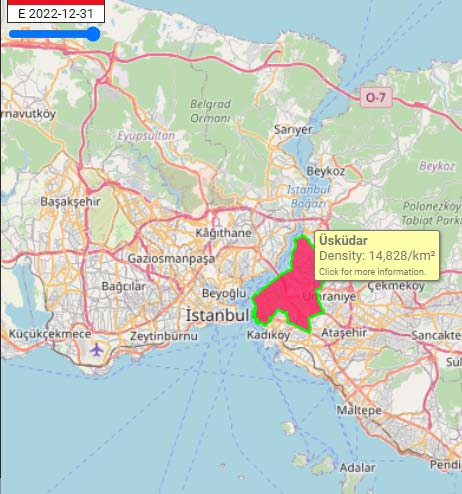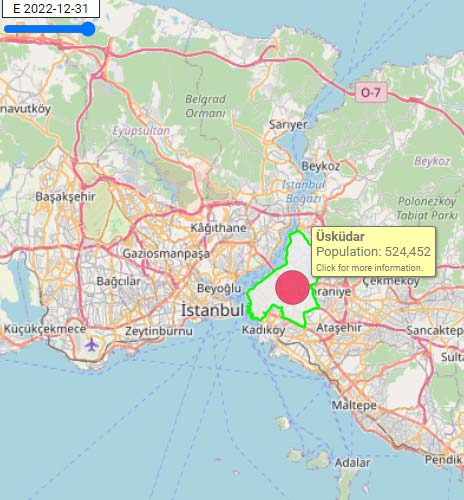Üsküdar District: A Brief History, Population, and Geographical Information
Üsküdar is a city which goes way back in centuries with its history, nature and works of art. Üsküdar which is valuable as a pearl in ‹stanbul and which has a global reputation, will advance into the future with its past and natural heritage as a more modern and more contemporary city. We make all the efforts to pass on the natural heritage of this beautiful area which has been the center of many civilizations with its history, nature and people.
The name of Üsküdar has always been called upon with tolerance and generosity. Help and quality in our services are essential for us to demonstrate our sensitivity to our past. We are proud to be the hosts of this beauty which has, Kizkulesi, Çamlica Hill, the Fountain of Ahmet III, the Aziz Mahmut Hüdayi Dervish Lodge, its coast with the best views of ‹stanbul, its forests with all the shades of green, its parks and gardens, its monumental trees of centuries old and its educational and cultural centers. There are so many hidden treasures that need to be explored in this beautiful area which houses all the splendor of Istanbul.
History of ÜSKÜDAR
Üsküdar has a rich and diverse history dating back to ancient Greek colonization in the 7th century BC. Originally known as Chrysopolis, the city was an important harbor and shipyard used as a staging post in wars between the Greeks and Persians. It played a significant role in Byzantine history, as all trade routes to Asia started there, and all Byzantine army units heading to Asia mustered there.
During the Ottoman period, Üsküdar was a large suburb of Constantinople and was one of the three communities outside the city walls, along with Eyüp and Galata. The area was also a major burial ground, and today, many large cemeteries remain, including Karacaahmet Mezarlığı, Bülbülderesi Mezarlığı, and a number of Jewish and Christian cemeteries.
The city changed its name to Skoutarion in the 12th century, deriving its name from the Emperor’s Skoutarion Palace nearby. In 1338, the Ottoman leader Orhan Gazi took Skoutarion, giving the Ottomans a base within sight of Constantinople for the first time. The name “Üsküdar” is believed to have originated from the word “scutari,” which means “raw tanned leather” in reference to the leather shields used by the guards in the Byzantine Empire.
Üsküdar’s fine old mosques, crooked streets, and small timber houses give it a more Oriental characteristic than Stambul. Until a century ago, Üsküdar was the terminus of the caravan routes from Asia Minor, by which the treasures of the East were brought to Constantinople. Today, Üsküdar is a bustling district of Istanbul with a mix of historic and modern architecture, including Ottoman-era mosques and traditional markets, as well as modern cafes, restaurants, and shopping centers.
Today, Üsküdar is a bustling district of Istanbul with a mix of historic and modern architecture, including Ottoman-era mosques, traditional markets, and modern cafes, restaurants, and shopping centers. It is home to well-established communities, many of whom are retired, and a large student population due to its central location and affordability.
The waterfront is bustling with people during rush hour, running from ferryboats and motorboats onto buses and minibuses. Üsküdar also has a distinct smell of the sea, the sound of foghorns, motorboats, and seagulls, and offers one of the best views of the city.
The central square is currently being dug up for a tunnel under the Bosphorus, which will carry an underground railway. However, the construction has been continuously running into artifacts of great archaeological value.
The area behind the ferry dock is a busy shopping district with many restaurants serving Ottoman cuisine, olive oil-based dishes, and ice cream. There are also a number of important Ottoman mosques in the area. However, there are relatively few cafes, cinemas, billiard halls, and places for youth to congregate.
In addition, Üsküdar is home to the private Üsküdar University, founded by the Human Values and Mental Health Foundation, with a campus located in the district.


524,452 Population [2022] – Estimate
35.37 km² Area
14,828/km² Population Density 2022
-0.34% Annual Population Change [2017 → 2022]
